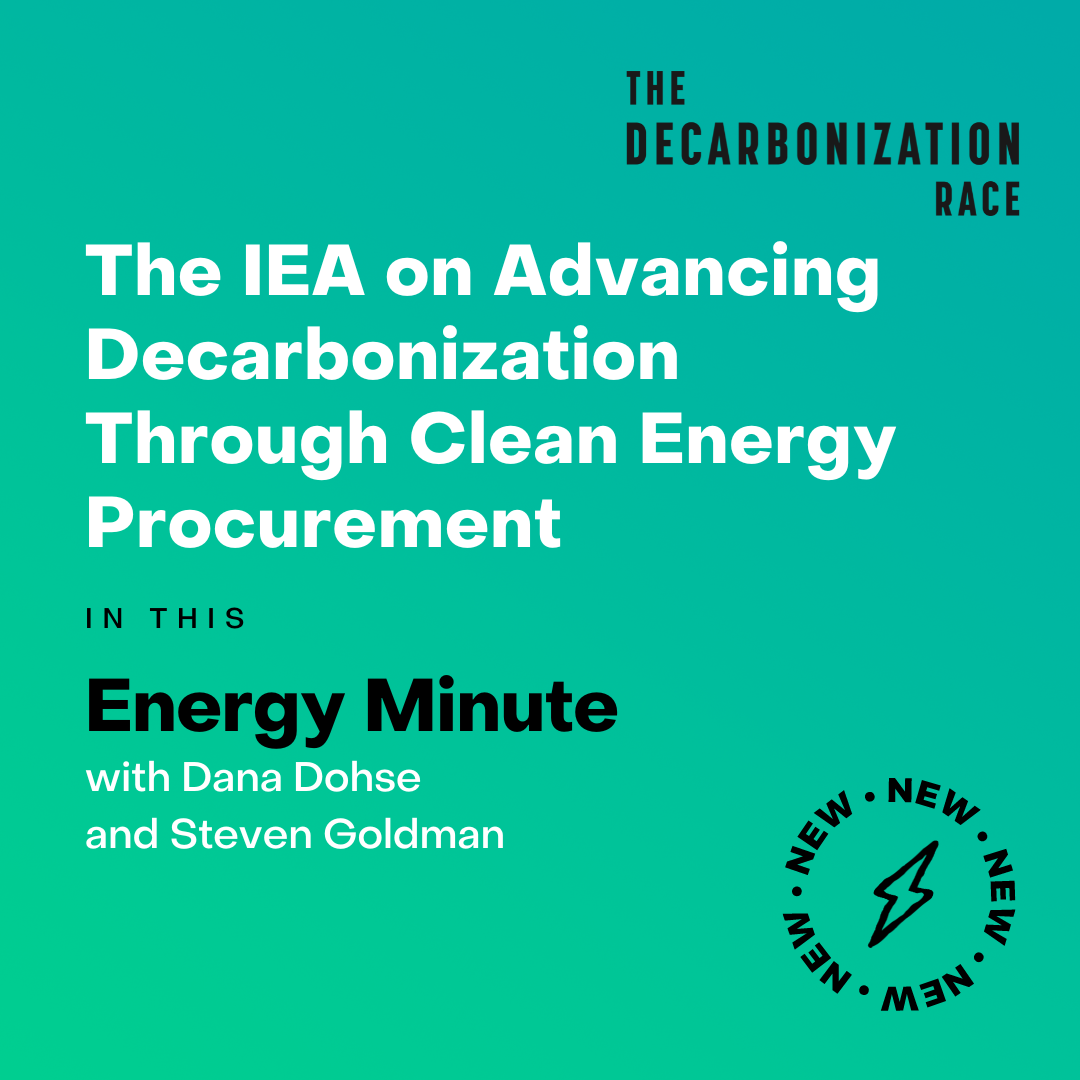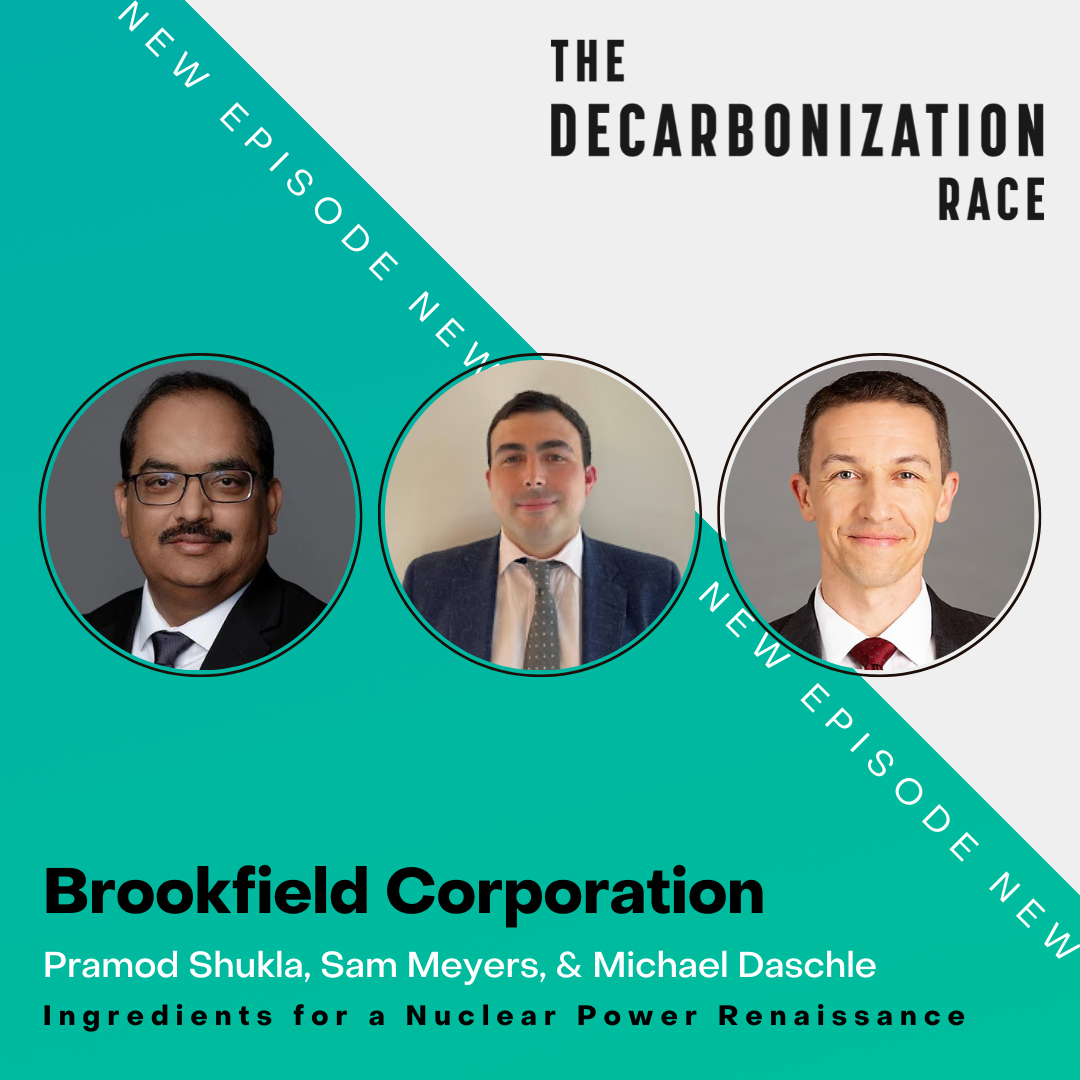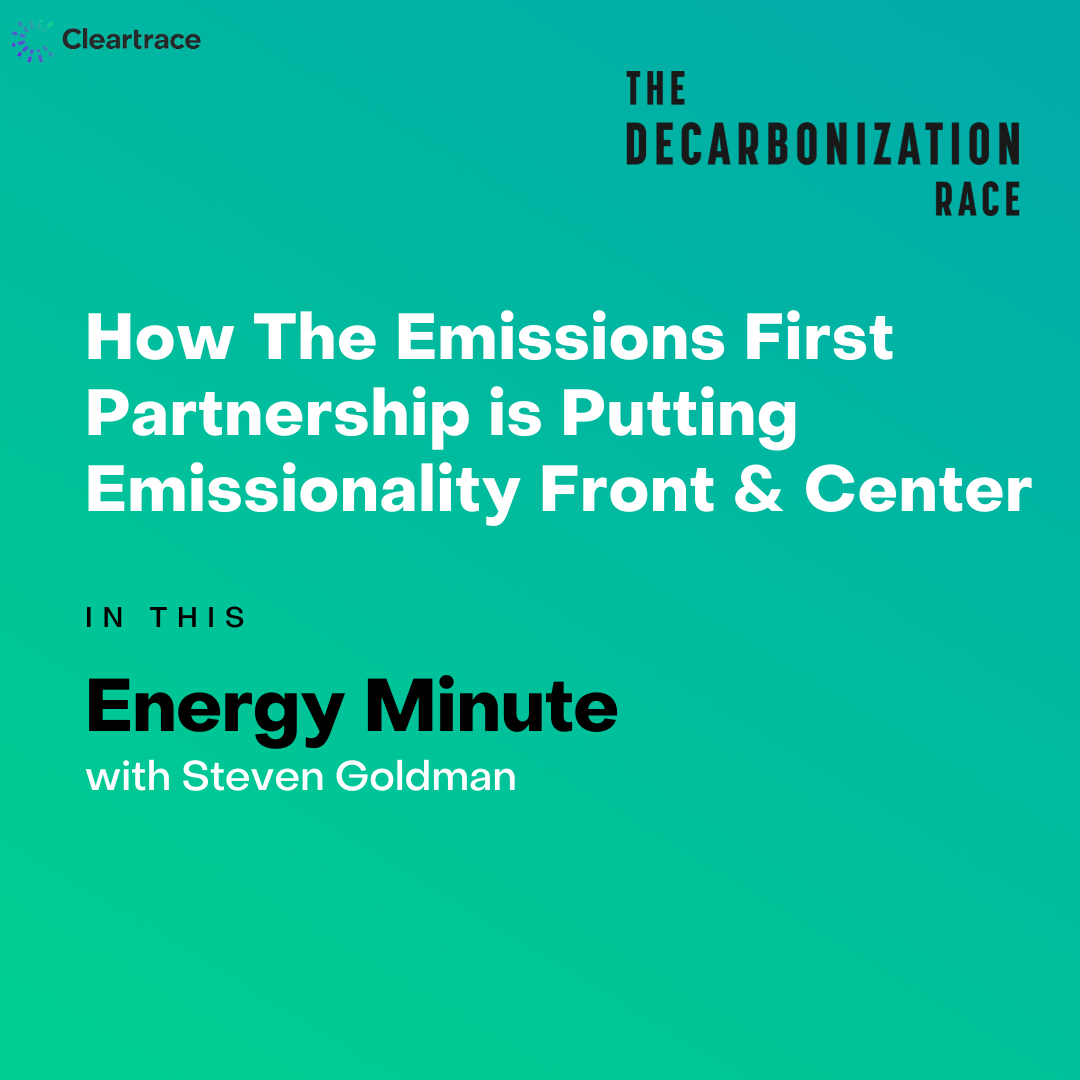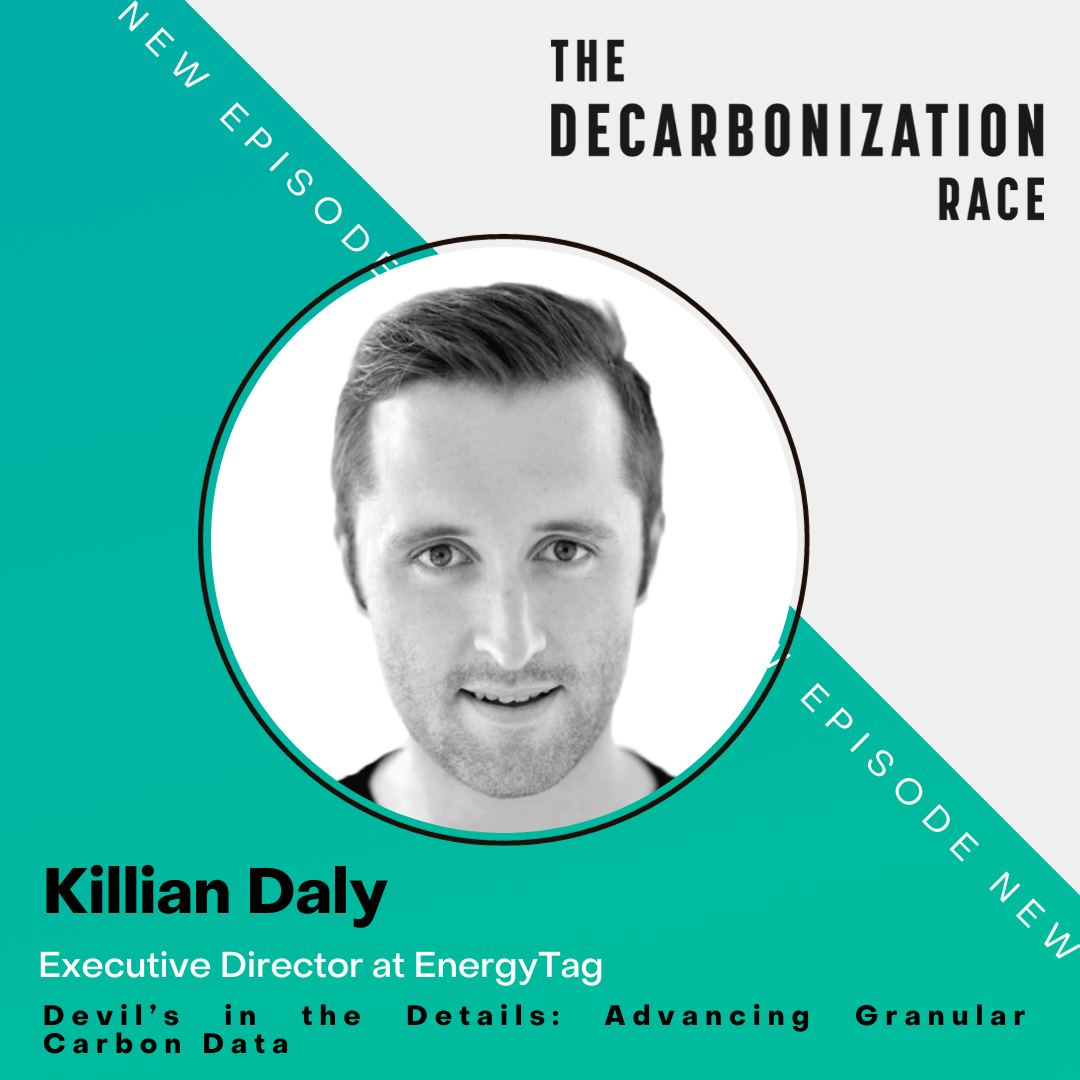Energy Minute: The IEA on Advancing Decarbonization Through Clean Energy Procurement
One key publication that was highlighted during the UN COP27 summit was the International Energy Agency's (IEA) report on advancing decarbonization through corporate clean energy procurement. In this Energy Minute, Dana and Steven dive into the report and its key takeaways—in particular looking at the options available to corporations for sourcing clean energy, some differences in how decarbonization efforts would likely differ in the example countries of India and Indonesia, and how even setting lower targets than 100% on time-matched carbon-free energy can yield better carbon reductions than those obtained through a simple solar or wind power purchase agreement by itself.

One key publication that was highlighted during the UN COP27 summit was the International Energy Agency’s (IEA) report on advancing decarbonization through corporate clean energy procurement. In this Energy Minute, Dana and Steven dive into the report and its key takeaways—in particular looking at the options available to corporations for sourcing clean energy, some differences in how decarbonization efforts would likely differ in the example countries of India and Indonesia, and how even setting lower targets than 100% on time-matched carbon-free energy can yield better carbon reductions than those obtained through a simple solar or wind power purchase agreement by itself.
The IEA is a Paris-based organization that provides policy recommendations, analysis, and data on the energy sector. They have 31 member countries and 11 associated countries. Their contribution to COP27 helps steer energy policy and practice, so tune in to hear their recommendations for achieving decarbonization goals.
Key Takeaways
- Myth-busting numbers: Using more targeted clean energy strategies – reaching for even a 90% carbon-free energy goal, for example – are not as expensive and can be more impactful than we once thought them to be. Creating what the IEA is calling middle-ground goals will move the clean energy needle forward.
- Clean energy procurement is rising fast: While RECs are still the highest percentage of clean energy sales, PPA shares have grown from 4% to 27% over the last decade.
- With the difficulty in tracking energy across different locations, times, and types of procurement, the IEA Report recommends creating clear, public-facing goals, looking beyond annual matching and reporting, and investing in more nuanced strategies (hourly tracking, direct procurement or aggregation to secure PPAs, etc) to tackle clean energy goals.
Resources
- IEA Advancing Decarbonization Through Clean Energy Procurement report: https://www.iea.org/reports/advancing-decarbonisation-through-clean-electricity-procurement
Transcript
Dana Dohse: Welcome to this week’s Energy Minute, brought to you by Cleartrace. I’m Dana Dohse.
Steven Goldman: And I’m Steve Goldman.
Dana Dohse: On this Energy Minute, we’re going to take a quick look at a new IEA report that examines the impact of company sourcing clean energy hour by hour, versus on an annual or monthly basis, and the different impacts of each strategy.
Steven Goldman: The COP27 summit wrapped up before the Thanksgiving holiday with less grand results than many were expecting, especially given the focus was on implementation of plans set forward the year prior in Glasgow.
Dana Dohse: Right. There was a last minute agreement on a new loss and damage fund that would benefit vulnerable communities hit hard by climate disasters, the details of which will be worked out at next year’s summit.
Steven Goldman: There were also a number of new initiatives announced aimed at limiting methane emissions from the oil and gas sector, but there was much less movement than was expected overall on limiting the use of fossil fuel based electricity and transportation fuels.
Dana Dohse: Right, and as we’ve mentioned before in the show, there was a particular report dropped during the proceedings that really caught our attention.
Steven Goldman: Right, the International Energy Agency’s report, it was on advancing decarbonization through clean energy procurement, especially by corporations, so let’s dig into it.
Dana Dohse: So the IEA is a Paris-based organization that provides policy recommendations, analysis, and data on the energy sector, and their focus is really on curbing carbon emissions and reaching global climate targets. They have 31 member countries and 11 associated countries.
Steven Goldman: And those goals are really about influencing emission reduction outcomes, so things like onsite generation, RECs, guarantees of origin, PPAs, green power products or green tariffs. So all the instruments we’ve been talking about around decarbonization.
Dana Dohse: Right, right, and this report in particular goes into the impact of hourly versus annual matching and how different carbon accounting principles can be applied, and looking at how those goals change and what that means for the actual carbon reduction reporting that is generated.
Steven Goldman: And also the technologies that need to be incorporated to make that happen. We’ll talk more about this as we go on, but clean dispatchable generation, energy storage, demand reduction technologies, that type of thing. So let’s dig into the report a little bit. From your view, what was the critical takeaways from this?
Dana Dohse: So the big thing they really talked about was this move from annual accounting, which we’ve talked about before, which is looking at your market based emissions and then matching that on an annual basis, and the benefit across a variety of stakeholders and technologies that it can have when corporations start to take into account a more granular look at their data, whether that’s pursuing 100% carbon-free energy strategy or even starting to look at things on a monthly basis.
Steven Goldman: Well, what’s really interesting I noticed in the approach was that it wasn’t an either or proposition, right? It was an annual monthly or just hourly, but they actually looked at a 24/7 or an hourly approach where 100% wasn’t necessarily the goal, but they were looking at what could be the benefits or the impacts of the grid, even with a 90% approach, where there’s still a certain amount of grid drawn power that’s part of the mix that you don’t necessarily have your control over.
Dana Dohse: And I think that’s a new way of looking at it, at least from what I’ve seen, and I like that because it shows the nuance of really admitting the expense of going towards 100% CFE strategy. So thinking about if you look at a corporation as a single entity, what would it actually take from a resource perspective to get them to 100%? Well, that extra 10% might not be best spent there. There might be better places to spend that. When you look at the procurement picture as an overall grid, and as an overall we’re trying to decarbonize the whole grid, not just this one company’s load profile.
Steven Goldman: And when we were talking with Chris Pennington when we first started the podcast, that was one of the key points he made, was that they’d been operating somewhere between 60 and 95% CFE, depending on time of day, depending on which of their facilities and the portfolio they were able to source for. And his point was this isn’t a all or nothing journey. This is something that companies will continue to have to work towards because the balance of the grid’s going to change over time. We’re going to see, as we go for higher levels of renewables, as they indicated in this report, that the more renewables are on the grid, the more potential there is actually for curtailment of those resources. So unless there’s more flexible resources that are brought into the mix to make sure that the power that’s being generated is dispatched as well at the time that it is most beneficial, that you could end up in situations where you’ve reached for a higher level of renewables, but you’re not necessarily getting a higher carbon reduction impact as a result.
Dana Dohse: I’m glad you brought up the changing grid makeup and why now? Why are they talking about this at this moment? And I think that’s really an important takeaway, because for a long time we were using a lot of unbundled RECs to incentivize new renewable energy development, and that had a really great purpose, and it played into that perfectly. That’s exactly what’s happening. But as the grid starts to become more and more carbon free, there starts to be more nuance, and that’s the whole point of this report is what types of nuance do we need to look at from an accounting perspective, from a sourcing perspective, and how does that influence policy regulators and corporates?
Steven Goldman: Part of it was that they looked at India and Indonesia as the two nation examples within this, and both have really different grid mixes. So what that led to was different outcomes as they modeled companies trying to shift their procurement to clean energy. What they found was it really depends depending on the time and location of procurements, that in some cases they were showing that if they added a 100 megawatt load to the grid, depending on the grid mix in that particular region, it actually would have different scales of impact in terms of emissions. And on the flip side of that, the deployment of additional solar generation as a means of reducing those carbon impacts, depending on where it was in the grid, it actually might have less impact than you would’ve thought. So it was hitting quite a wide range, especially in Indonesia.
Dana Dohse: And I think there’s another couple areas that were interesting to dig into there. And first was the impact of cost. 100% carbon free energy gets a bad rap for being really expensive, but the report really highlighted that looking at more nuanced strategies, whether that’s a monthly match or even a 90% CFE match, or a nice middle ground for corporations that bring some of the benefits we’ve been talking about without breaking the bank. So the other one I was thinking about was really incentivizing dispatchable resources,
Steven Goldman: Right, in particular, what they were finding was that procurement strategies that are balancing demand with generation on an hourly basis, it really requires flexibility in the system. I came to Cleartrace from the energy storage world, and a lot of the way that energy storage gets talked about, and demand response as well, is adding flex to the system. Otherwise, you’re just putting power out whenever it’s generated and either it’s useful at the time it’s used, you have an ability to store it, or the resource may have to be curtailed because the grid may not be able to handle that much additional power. So the question becomes how do you make sure you’re getting the best benefit out of that? Now when you’re looking at an annual sourcing strategy, it’s largely being met with additional solar and wind. You’re putting more bulk generation capacity onto the grid.
But for this precise matching that we’re talking about with an hourly approach, you need the other technologies in the mix, you need dispatchable clean energy, you need storage, you need demand response that enable you to deliver that energy where it’s needed. The other thing that the authors noted in particular is that when you’re moving towards a time matched approach, you can lead to certain inefficiencies that would not have happened when you’re focused on a grid connected strategy. So they’re noting that if you have many smaller actors that are working to source their own clean energy, it can lead to less efficient buildouts of clean energy as opposed to building larger grid scale assets or a wider range of grid scale assets. And overall then you can’t optimize the larger grid scale assets for the overall outcome in a larger grid decarbonization picture.
Another interesting takeaway was that while RECs are still retaining the highest share of total clean energy sales, the report noted it was around 45% in 2020, the share of PPAs went up significantly in the last decade, from 4% in 2010 to 27% in 2020. Another strategy too is that corporations are starting to aggregate demand in some cases where some large and some small companies will band together to pull their buying power. One example that I found in the report, Apple, Akamai, Etsy, and Swiss Re all had different demand profiles and they aggregated them to procure clean energy together. And what that allowed was the four corporates were able to sign side by side PPAs that had very different sizes of procurement, ranging from 4.5 megawatts to 134 megawatt hours. So you have totally different size companies, totally different size needs, but are able to band together and get the same kinds of bulk buying benefits.
A similar example was in the UK, a renewable developer signed a PPA with a pool of 20 universities that was facilitated by a supply platform that was focusing on helping businesses procure clean energy. And that arranged a standardized and simplified documentation of the agreement so that you had some more contracting conditions and a very uniform experience for all the universities involved.
Dana Dohse: And we saw something similar get announced earlier this year. It wasn’t mentioned in the report, but when Walmart helps some of their suppliers band together to do a PPA, very similar idea, and it seems like we might be seeing more and more of that activity.
Steven Goldman: Exactly. Project Gigaton.
Dana Dohse: Yes. Another problem with annual accounting that the report pointed out was really around the marginal view of things. And if you think about it, it can be explained via one example. If you’re a company and your load goes up by 10%, you can’t understand the impact of that on the grid by looking at an annual admissions number. You really have to understand what marginal generator came onto the grid to support your increased load. That really highlights this importance of understanding the time, understanding the location, and really how does the procurement strategies, how do the technologies that you’re investing in really impact the net impact of your load on the grid as a whole?
Steven Goldman: Fundamentally what we’ve moved into is a place where the grid is much more dynamic. These technologies that we’re talking about, demand response, is the ability to dial down demand through coordinated effort among different players or to even ramp up demand like dialing up load at times when there’s excess power on the grid. But it’s all of these ways in which, and then also using energy storage is the same idea, it’s the idea that we’ve moved from central power generation all being directed by single grid, core grid operators or regulating authorities and balancing authorities, to we have a grid where it’s a lot more interactive elements than there used to be, and even more interactive down to the hourly level, down to the sub hourly level.
Dana Dohse: So the report also highlighted some of the challenges of corporations are only looking at procurement from emissionality perspective or absolute emissions reduction. In that case it makes it hard to understand a company’s emissions it’s responsible for and what it’s actually reducing because there’s no direct link to the consumption. So because these things are happening at different times, different grade regions, meaning the load and the emissions reductions through unbundled RECs when you can’t tie those two things together, it makes it difficult to understand the true impact.
Steven Goldman: So I think some final advice we would give to our corporate listeners would be that there’s a range of actions you need to take. One is signify your intent with clean electricity procurement goals that are public facing so that stakeholders understand what you’re reaching for. You need to really think about enhancing emissions reporting and accounting. Things like marginal impact methodology will help you protect your reputation and ensure that your investments are really contributing to decarbonization. I mean, obviously we talk about that a lot on here because our role in the market has been around data, but fundamentally it’s about connecting the dots between action and benefit.
And also companies should be looking beyond annual matching to support the deployment of flexible strategies. So it’s how do you procure power in ways that are potentially dispatchable? That could be working with a power producer who has projects that have firm renewables, so it could be solar or a wind tied to battery or other energy storage systems. And then when pursuing hourly, try to avoid inefficient investments. It may be more beneficial to sign a PPA if you have that market leverage from a larger grid scale asset as opposed to going for onsite generation as long as it’s in the same region and therefore able to be counted within your grid region.
Dana Dohse: To add on to your point about inefficient generation, I think they’re also highlighting the importance of this middle ground of goals, looking at a 90% CFE strategy so that you’re really thinking about how your procurement connects with the broader grid.
Steven Goldman: And not to get dissuaded by setting the bar so high that it seems insurmountable. I think in this case there’s strong middle ground for looking towards a 90% CFE target that’s still going to make significant improvements in your overall carbon emissions picture.
Dana Dohse: For me, one of the bigger things this all wraps up to is be aware of these trends. The report highlighted that protecting your reputation, ensuring your investments are actually contributing to decarbonization, these are things that corporates need to really be paying attention to because these voices are only going to get louder.
Steven Goldman: Exactly. And it’s interesting to read about the newer trend of not green washing, but green hushing. We’re hearing about companies that are getting more and more reticent about talking about clean energy targets and the progress they’re making towards those because they’re afraid of risk, they’re afraid of liability, they’re afraid of claims of green washing. But the key to avoiding the need for green hushing and avoiding claims of green washing is data. It starts and ends with having the proof behind what you do.
Dana Dohse: Absolutely. And this report can be used as a playbook for companies looking to understand how to communicate their progress and how to effectively measure it.
Steven Goldman: Absolutely. I say absolutely a lot.
Dana Dohse: Thanks for joining us for this week’s Energy Minute. For more of the latest news in sustainability and decarbonization, visit cleartrace.io.









